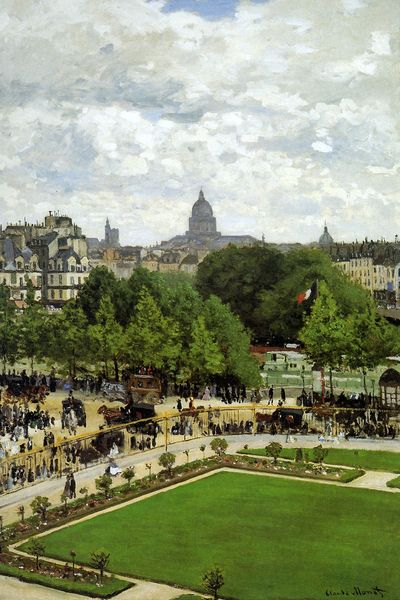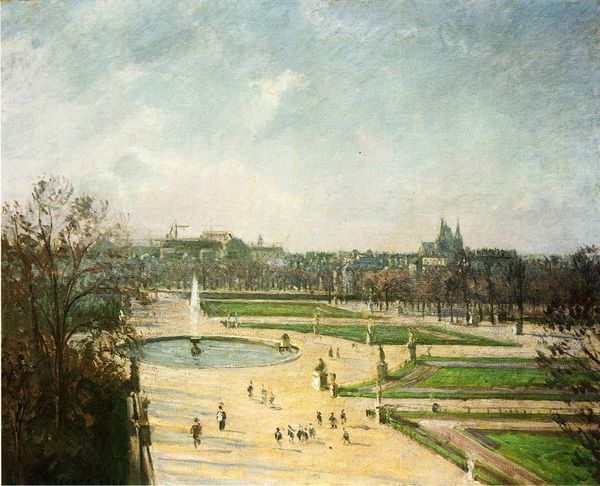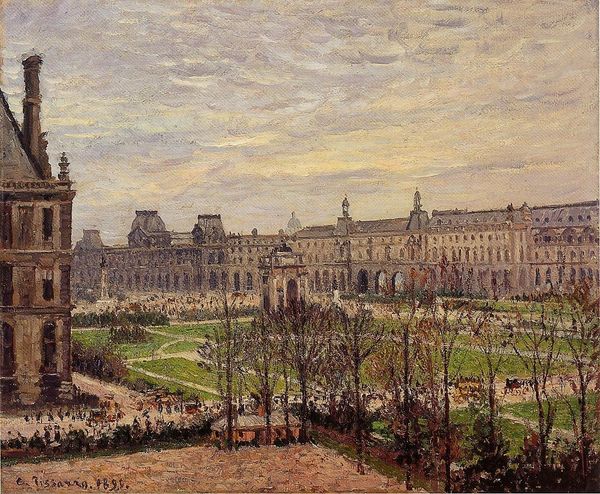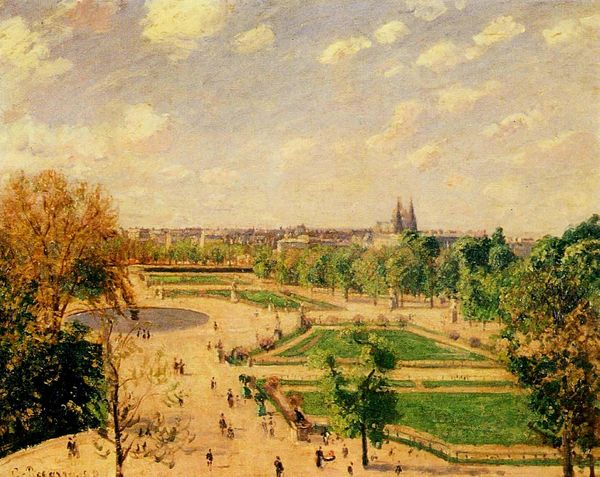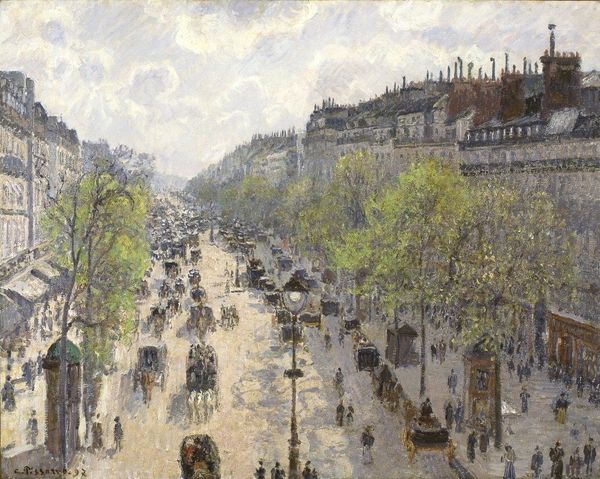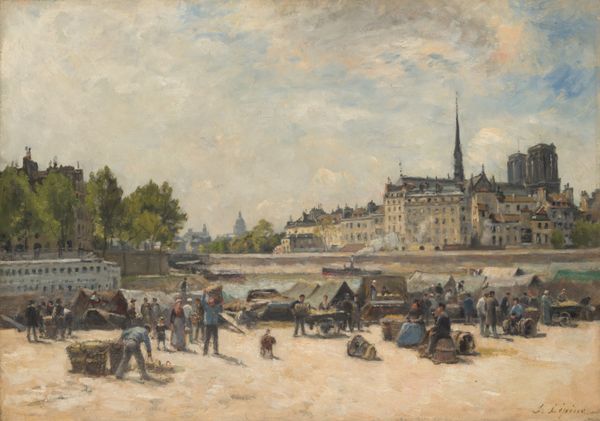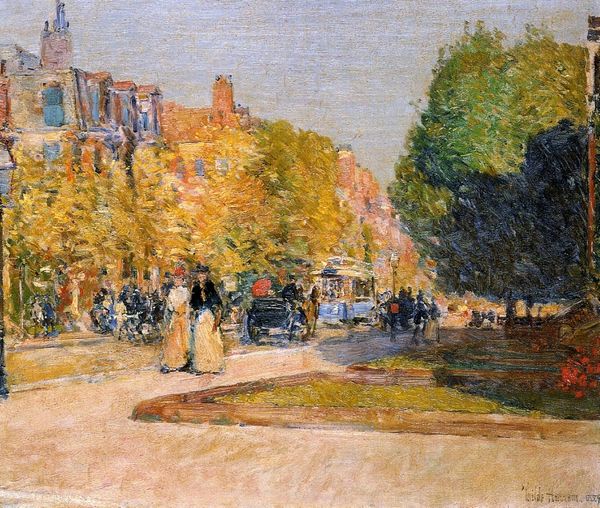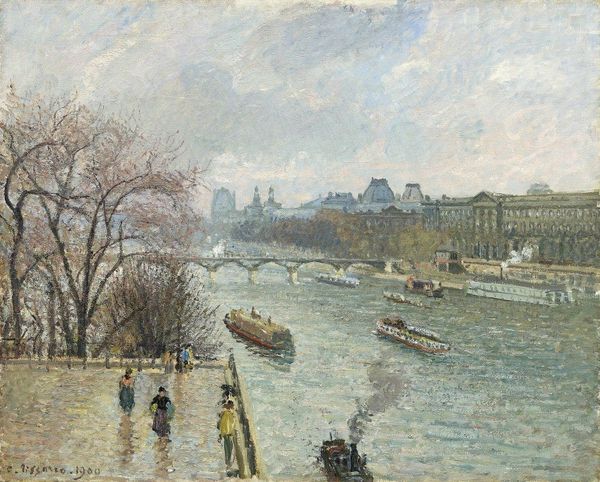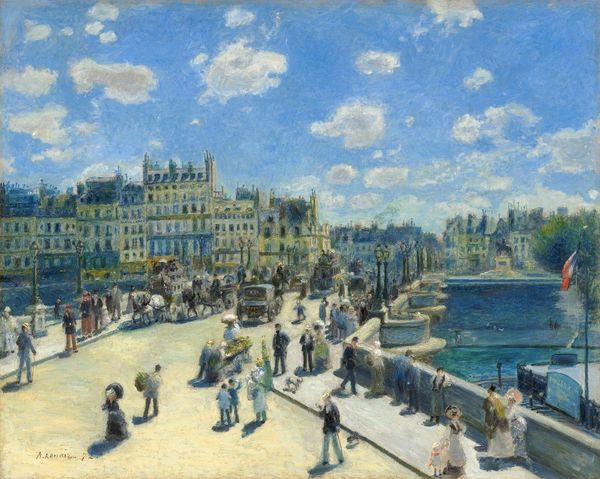
painting, oil-paint
#
flâneur
#
cityscape
#
painting
#
impressionism
#
street view
#
oil-paint
#
landscape
#
urban cityscape
#
oil painting
#
urban art
#
cityscape
#
genre-painting
Dimensions: 93 x 65 cm
Copyright: Public domain
Editor: Here we have Claude Monet's "Wharf of Louvre, Paris" from 1867, rendered in oil paint. There's a distinct hustle and bustle to this scene, a real energy. What strikes me most is how many people are depicted, what can you tell me about it? Curator: Well, look closely at the composition; see how Monet meticulously applied paint to depict not only the architecture but the very fabric of Parisian life. The raw materials – the pigments ground to create the paints, the canvas itself – are deployed to represent the city's burgeoning commercialism, its endless transactions and movements. How might the industrial revolution be reflected in even such seemingly placid elements as the figures' costumes, or the horses pulling carriages? Editor: I hadn't considered the materials used in their clothes and carriages. You mean how industrial processes allowed for mass production, impacting what people wore and how they moved around? Curator: Precisely. The very leisure depicted here becomes a product of those social and industrial shifts. It is worth thinking about how labor shaped Monet's practice and how he would be part of a shift towards art becoming less explicitly ‘useful’. Can we see in the very application of the paint itself, a rapid and deliberate act, a metaphor for this new pace of life? Editor: That's a compelling perspective. Seeing it as a reflection of broader social changes through the materials depicted is quite insightful. Thank you. Curator: My pleasure. Understanding the historical context surrounding the making and materials gives a fuller appreciation for the artwork, going beyond aesthetic value alone.
Comments
No comments
Be the first to comment and join the conversation on the ultimate creative platform.
